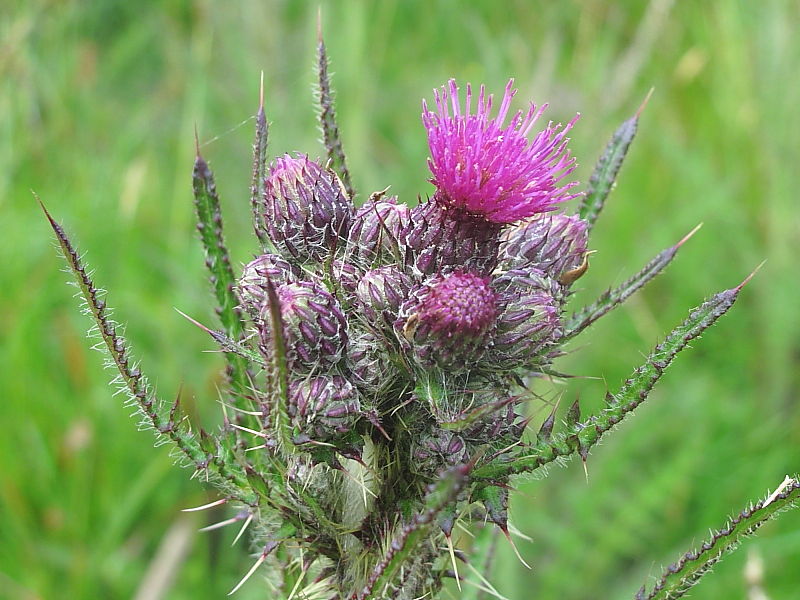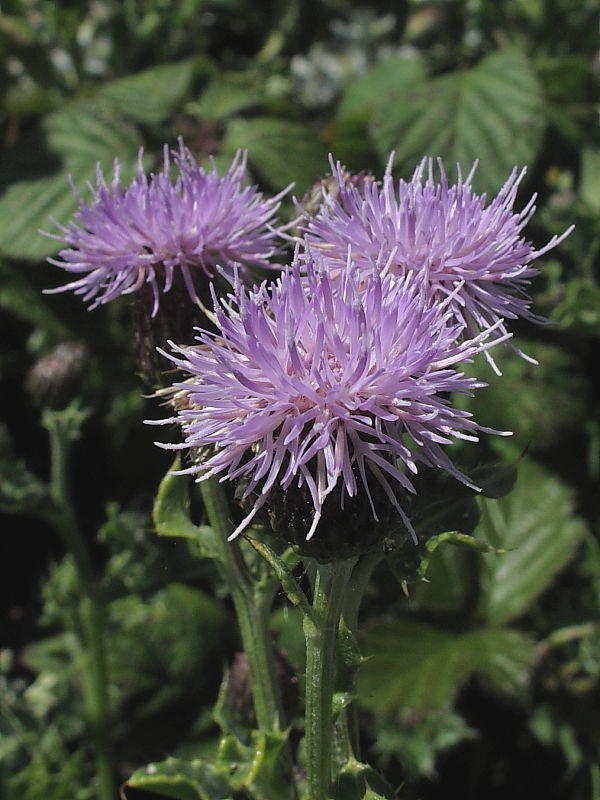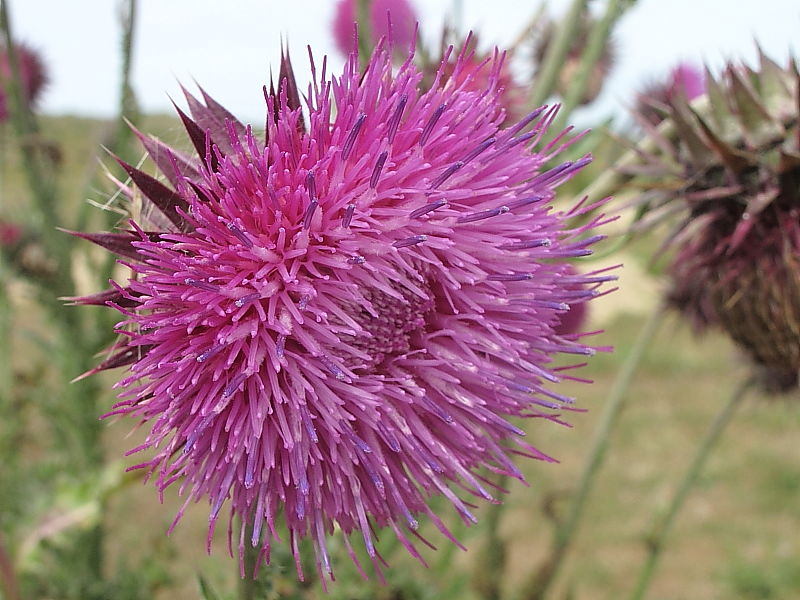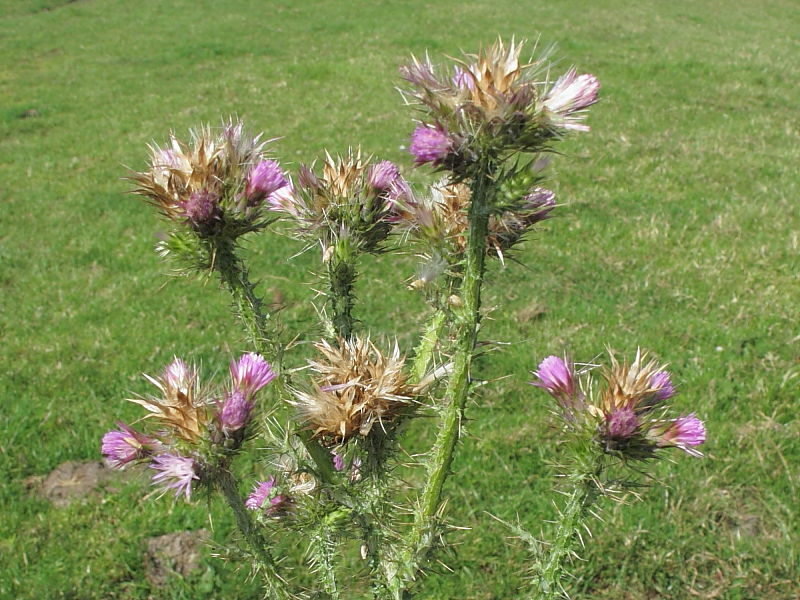Introduction to common British thistles
All thistles belong to the daisy family (asteraceae), the largest family of flowering plants in the UK after grasses. The flower heads are made up of a number of individual flowers or florets giving rise to this family being called “composites”.
As children we all get to recognise thistles early on since they have prickly spines that hurt, so we learn to avoid them. However, some insects use thistles to provide a safe place to build their home, protected by those sharp spines.
The leaves and nectar of thistles are very good sources of food for many insects, such as the caterpillars of the Painted Lady butterfly, and some birds, such as Goldfinch, eat the seeds making them an extremely valuable wildlife resource.
There are two groups of thistles: Carduus and Cirsium. If you’re interested in the distinction between them, it get’s a bit technical but there is a note at the end of this page.
What surprised us initially was the number of different thistles there are in the UK. This page sets out some of the key characteristics to look for to help identify the different British thistles. We’ve only included the thistles we come across most often. More details about the individual plant characteristics, the habitat they’re found in and the flowering time, as well as lots more images are given on the individual species page.
The wild flower gallery has images of other wild flowers in Britain shown by family.
Spear Thistle (Cirsium vulgare)
- purple flowering head
- elongated stem
- upper surface of leaves bristly or dull
- stems with discontinuous spiny wings
Marsh Thistle (Cirsium palustre)
- purple flowering head (sometimes white)
- elongated stem
- upper surface of leaves not bristly (often shiny)
- stems with continuous spiny wings
Creeping Thistle (Cirsium arvense)
- purple flowering head
- elongated stem
- upper surface of leaves not bristly (often shiny)
- stems not winged
- plant much branched
- leaf lobes with strong spines
- heads 1.5cm-2.5cm
Meadow Thistle (Cirsium dissectum)
- purple flowering head
- elongated stem
- upper surface of leaves not bristly (often shiny)
- stems not winged
- plant unbranched
- leaves without spines and with cottony hairs beneath
- heads 2.5cm-3.0cm
- basal leaves toothed
Musk Thistle (Carduus nutans)
- heads ovoid or hemispherical
- corolla (petals) 2-lipped
- heads usually 3-5cm across and usually dropping
- involucral bracts lancelate and narrowed just above the base
- middle outer bracts strongly reflexed
Slender Thistle (Carduus tenuiflorus)
- head oblong-cylindrical
- corolla (petals) equally 5-lobed
- stems continuously winged to just beneath head
- 2-10 heads in a cluster
Note: Carduus or Cirsium
The pappus is the part that surrounds the base of the corolla tube in the individual floret.
Carduus – those with simple pappus hairs and a bristly receptacle.
This is illustrated clearly in the image of a Musk Thistle seed where the hairs are unbranched.
Cirsium (or Plume-thistles) – those with a pappus of feathery hairs.
The hairs of the seedheads in the image are branched and feathery.




